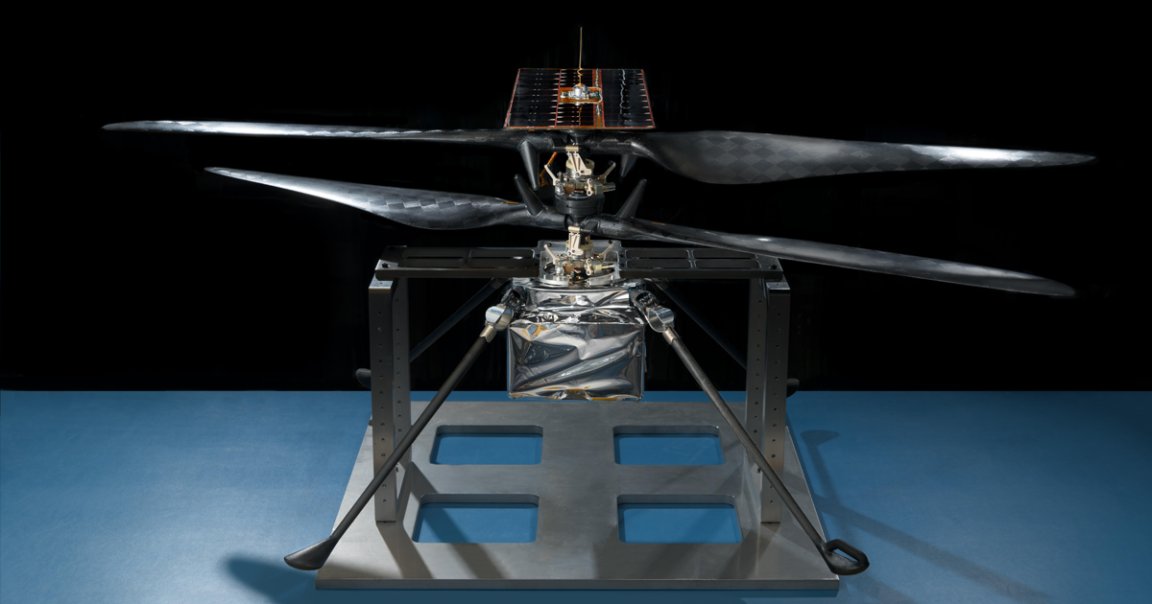
Dynamic Duo
If all goes as planned, when NASA’s Mars 2020 rover reaches the Red Planet in February 2021, it’ll bring a tiny buddy along with it.
In May 2018, NASA announced plans to create the Mars Helicopter, a four-pound autonomous rotorcraft designed to accompany the Mars 2020 rover on its upcoming mission.
After nearly two months of testing, the agency announced on Thursday that the helicopter is now Mars-ready, meaning it’ll likely be the first heavier-than-air craft to take flight on another planet — opening new options for the future of off-world exploration.

First Flight
According to a press release from NASA’s Jet Propulsion Laboratory, the first step to testing the mini helicopter destined for Mars was creating a mini model of Mars on Earth.
To do that, the Mars Helicopter team removed all the nitrogen, oxygen, and other gases from the air within JPL’s 25-foot-wide Space Simulator vacuum chamber, replacing it with carbon dioxide to mimic the composition of Mars’ atmosphere.
To replicate Mars’ lower gravity, the team attached a motorized lanyard to the helicopter. By tugging upward on the helicopter, this lanyard served as an effective “gravity offload system.”
“The gravity offload system performed perfectly, just like our helicopter,” test conductor Teddy Tzanetos said in the press release, later adding that it was “a heck of a first flight.”
Next Stop: Mars
The team tested the helicopter again the next day, and though the helicopter flew for less than one minute in total, the researchers claim it was long enough to ensure the craft’s more than 1,500 parts function as designed.
The team is now confident the mini helicopter is ready to begin its journey to Mars in July 2020, nestled under the Mars 2020 rover’s belly — conjuring images of a joey and its mother kangaroo.
A few months after the pair lands on Mars, the helicopter will set off on a series of test flights each up to 90 seconds long — and according to Thomas Zurbuchen, Associate Administrator for NASA’s Science Mission Directorate at NASA’s Washington headquarters, the implications of these flights could be profound.
“The ability to see clearly what lies beyond the next hill is crucial for future explorers,” Zurbuchen said in the press release first announcing the helicopter. “We already have great views of Mars from the surface as well as from orbit. With the added dimension of a bird’s-eye view from a ‘marscopter,’ we can only imagine what future missions will achieve.”
READ MORE: NASA’s Mars Helicopter Completes Flight Tests [Jet Propulsion Laboratory]
More on the Mars Helicopter: NASA Just Unveiled This Awesome, Tiny Helicopter That Will Cruise Over Mars